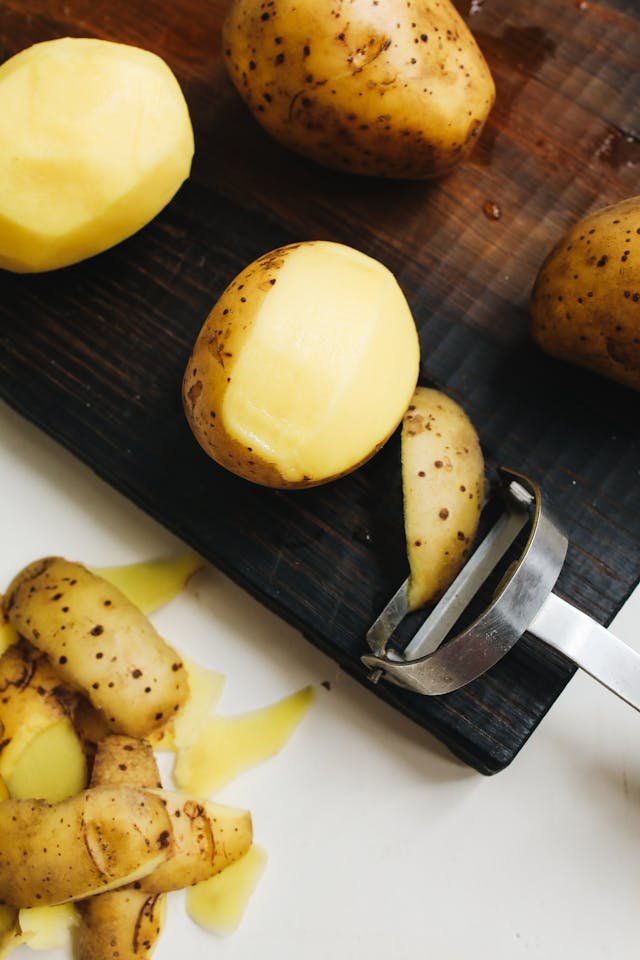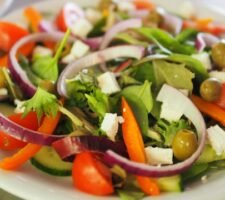
We’ve all been there…standing at the kitchen counter, peeling carrots or trimming off spinach stems without thinking twice. But have you ever wondered if those parts you’re tossing are actually good for you? I had that exact moment the other day while washing spinach for a salad. I automatically started removing the stems, then paused and thought…wait, am I supposed to do this? Am I getting rid of something bad, or something good that I should be eating instead?
So I did some digging, and what I found surprised me. Many parts of fruits and vegetables that we discard out of habit are not only edible, but also packed with nutrients.
In this post, we’ll walk through common produce items and look at which parts you should keep, when it’s okay to skip them, and how to make the most out of what you buy.
Why This Even Matters
Understanding which parts of produce are edible can:
- Enhance Nutrition: Many skins, stems, and leaves are rich in fiber, vitamins, and antioxidants. So when you cut them off and throw them away, you’re losing out on something healthy!
- Reduce Waste & Save Money: Utilizing the whole plant minimizes food waste. Plus we’re saving money that way. On top of that, if we eat more of this we won’t be as hungry for something else (possibly not as healthy) later.
- Save Time: Less peeling and trimming mean quicker meal prep. I’m all for that. Sometimes I feel like most of my meal prep at night is cutting vegetables for my salad!
Common Fruits & Veggies: Eat or Peel?
- Spinach Stems: Often discarded due to texture preferences, spinach stems are entirely edible and contain fiber. If you find them tough, consider chopping them finely or cooking them longer. (Now I know, and tonight when I get the spinach out, I won’t get rid of the stems!)
- Cucumber Skins: The cucumber skin is rich in fiber and contains important nutrients. However, cucumbers from supermarkets may have wax coatings or pesticide residues. Thoroughly washing them under running water and using a vegetable brush can help remove these substances. If you’re concerned about residues, peeling is an option.
- Carrot Peels: Carrot skins are edible and contain nutrients. A good scrub under running water can remove dirt and potential residues, making peeling unnecessary unless preferred for texture or appearance.
- Potato Skins: Packed with fiber, vitamins, and minerals, potato skins are nutritious. Ensure you scrub them well to remove dirt and any pesticide residues. However, if the skin is green or sprouted, it’s best to peel or discard those parts due to the presence of solanine, a natural toxin.
- Apple Peels: Apple skins are rich in fiber and antioxidants. Washing them thoroughly under running water is generally sufficient to remove most residues. If pesticide exposure is a concern, especially with conventionally grown apples, peeling is an option.
- Broccoli Stalks: Often overlooked, broccoli stalks are entirely edible and contain fiber and nutrients. Peel the tough outer layer, and the inner flesh can be sliced and cooked alongside the florets or eaten raw. I like eating the stalks, and in fact sometimes appreciate them more than the broccoli itself!
- Strawberry Leaves: While not commonly consumed, strawberry leaves are edible and can be used in teas or smoothies. They have a mild, slightly tannic flavor. Ensure they are clean and free from pesticides before consumption.
- Celery Leaves: These leaves are flavorful and nutritious, containing more calcium, iron, and magnesium than the stalks. They can be used in salads, soups, or as a garnish.
- Beet Greens: The leafy tops of beets are edible and highly nutritious, rich in vitamins A, C, and K. They can be sautéed, added to salads, or blended into smoothies.
Taste, Texture & What Works for You
At the end of the day, if a peel or stem ruins your enjoyment of a food, it’s okay to skip it. But you may find that once you get used to the texture – or find the right way to cook it – you’ll actually like it. Try roasting broccoli stems or blending beet greens into a smoothie. Little swaps can make a big difference.
Small Tweaks, Big Benefits
Try just one change at a time:
- Leave the peel on carrots
- Keep the broccoli stems
- Use celery leaves in your soup
It all adds up. Less waste, more nutrition, and a little less effort in the kitchen.
Bonus Tip: Worried about pesticides? That’s a valid concern, and sometimes, peeling is the better choice. I cover that in detail here: Should You Buy Organic? When Peeling or Prioritizing Organic Produce Makes Sense


